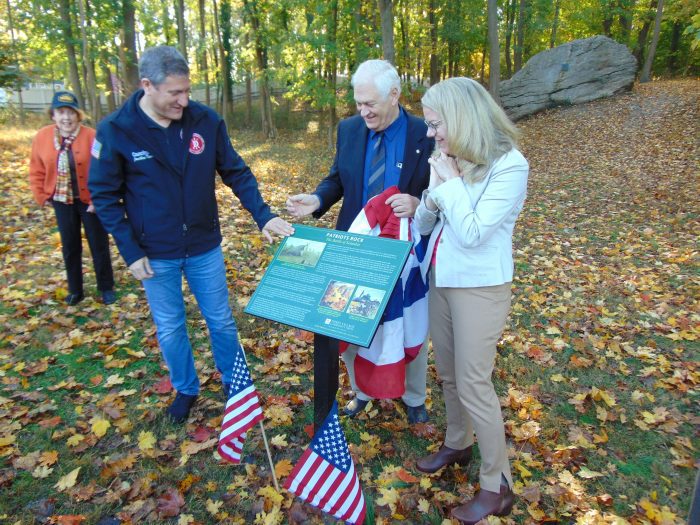Nature Matters: The six blind men, the elephant, and Steve Englebright

By John L. Turner

Perhaps you remember the parable of the six blind men, standing alongside a road when an elephant passes by. They desire to know what an elephant feels like so they reach out, each man touching a different part of the animal — one strokes a tusk believing it’s a spear, another a stout leg proclaiming he’s touching a tree trunk, yet another the side of the elephant stating he’s touching a wall, while a fourth grabs the tail, thinking he’s grabbed a rope. The fifth touches an ear believing he’s made contact with a fan while the sixth man feels the trunk and announces he’s grabbed a snake. Based on their unique individual impressions, they argue vigorously about what the elephant looks like, each understandably, but firmly, convinced their own impression is correct and the others are wrong.
Coming across this parable recently got me thinking about how it’s possible to have such differing, even disparate, impressions about the same subject. And it made me think of an individual: so let’s replace the elephant at the center of the discussion with New York State Assemblyman Steve Englebright, because just like the elephant being so many simultaneous things, Steve is too.
If you’re familiar with his long standing involvement for preserving historic structures in the Three Villages, like the Roe Tavern or the Rubber Factory houses, or his interest and expertise regarding local history, you would say he’s a history buff, passionate about preserving historic structures.
Get him over to the bluffs at McAllister County Park at the mouth of Port Jefferson Harbor and listen to him explain what he’s seeing in the wind-blasted rocks on the beach or the features of the bluff face itself and you’d know him to be a geologist, deeply informed about, and interested in, Long Island’s unique geology.
Or if you were a student at Stony Brook University, perhaps your connection to Steve was as a professor through one of the courses he teaches, learning about contemporary environmental issues or the history of environmental politics learning about the influential role played by John Muir, Rachel Carson, and Aldo Leopold.
Furthermore, if you’re a saltwater fisherman or general enthusiast of the marine waters surrounding Long Island, then your connection to Steve might be through the legislation he carried to stop the harvest of menhaden (also known as bunker) in New York water’s, thereby fueling a resurgence in the food chain as evidenced by the sharp increase seen in the numbers of humpback whales, tuna, sharks, and birds-of-prey. Breaching whales are now part of our ocean landscape.
Or perhaps it might be through an earlier connection you have with Steve — when he was Director of the Museum of Long Island’s Natural Sciences. Situated on the Stony Brook University campus, the museum introduced the wonders of the natural world to countless students and visitors. Steve the educator was at work.
But perhaps it is through his efforts to preserve land that most people know of Steve Englebright’s work. Following in the footsteps of one of the Three Village’s favorite sons — Robert Cushman Murphy — Steve amplified Murphy’s call for the preservation of the Long Island Pine Barrens, the extensive pine forests stretched over tens of thousands of acres of pine forest in Suffolk County; pine trees that knit together a rare ecosystem and which sits over much of the County’s drinking water supply.
In honor of R.C. Murphy, Steve sponsored a resolution, while a Suffolk County Legislator, to rename Peconic River County Park to Robert Cushman Murphy County Park. As a county legislator he played a key role in shaping the County’s $70 million Open Space Bond Act that resulted in the preservation of about two dozen environmentally significant properties throughout the County.
If that’s not enough, he also was critical to the success of the Drinking Water Protection Program, funded by a tiny percentage of the county sales tax, still in force today. This program has made a huge difference in protecting Suffolk County’s open spaces and drinking water supplies. And closer to home Steve was an open space champion in successfully advocating for the preservation of Patriot’s Hollow and Rock.
So just like the elephant is a “tree,” a “fan,” a “wall,” a “spear,” a “snake,” and a “rope,” Steve Englebright is a professor, geologist, historian, hydrologist, an educator, a legislator for both Suffolk County and New York State, and a conservationist. But here’s where the parable and reality diverge; while with the parable different experiences led to radically different points of view, different experiences with Steve all point to the same thing … what a remarkable difference maker he has been in safeguarding what is special about the Three Village community and the Long Island environment.
We all owe a huge debt of gratitude to Steve for what he’s accomplished on our behalf. Thank you Steve!!
A resident of Setauket, John Turner is conservation chair of the Four Harbors Audubon Society, author of “Exploring the Other Island: A Seasonal Nature Guide to Long Island” and president of Alula Birding & Natural History Tours.






